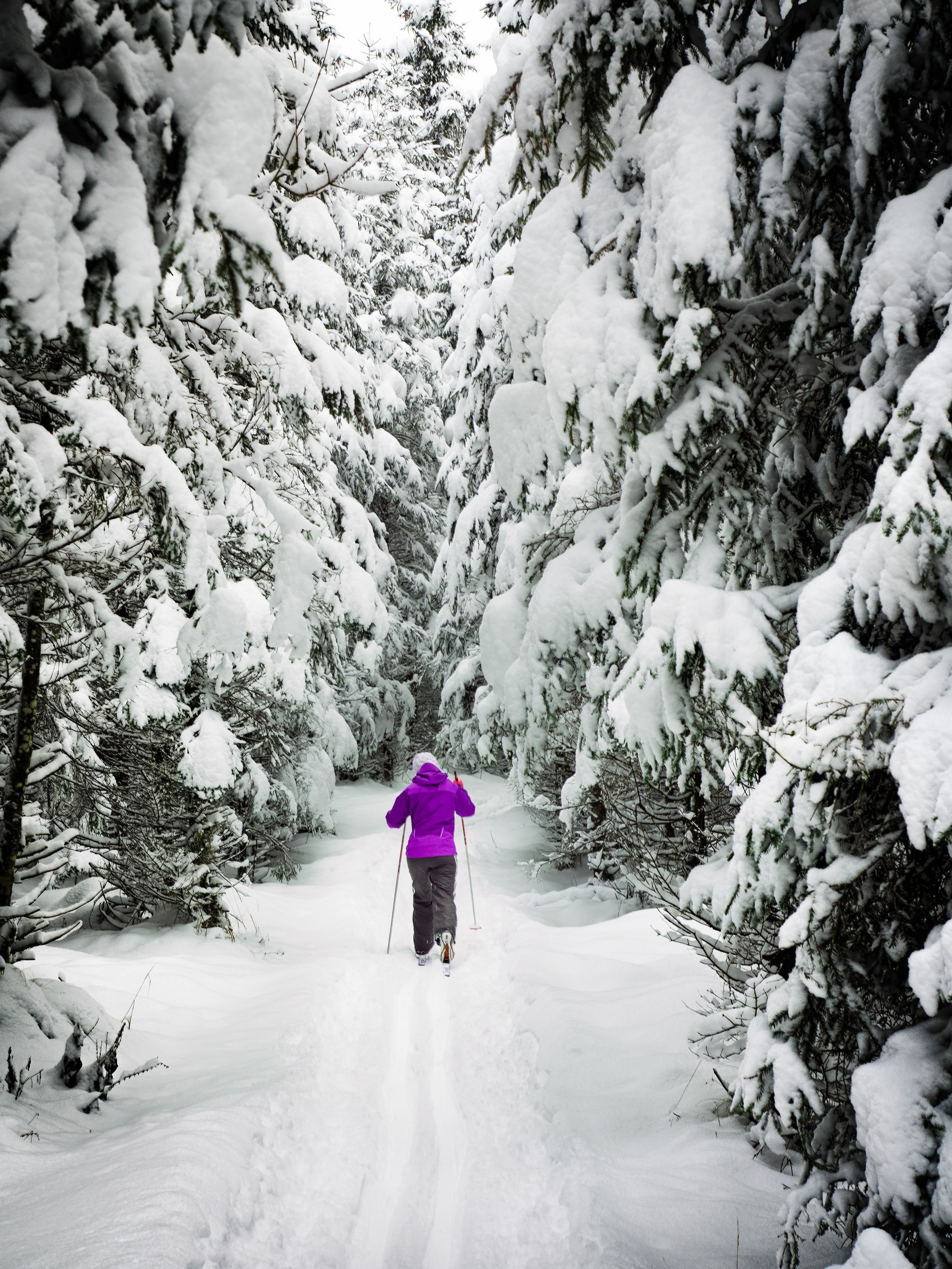Did you know that if you strap on a pair of cross-country skis just east of the Deerfield River at Vermont’s southern boarder and head north, you can ski on uninterrupted trail until you arrive at the Canadian boarder 300-miles north?
The Catamount Trail, which began in 1984 as the thesis project of Steve Bushey, Paul Jarris and Ben Rose when they were students at the University of Vermont, is now the longest uninterrupted cross-country skiing trail in North America. Its 300-miles of trail, between Vermont’s southern to northern boarders, were painstakingly pieced together by the Catamount Trail Association (CTA) over 20 years. The trail connects vast wilderness areas to old timber roads; it crosses farmland and protected forests, and caters to skiers of a variety of levels.
The trail is a vast cooperative effort, passing through both public and private land, and demanding hours of volunteer labor to maintain; it reflects a state-wide dedication to a no-frills outdoor culture and the preservation of the state's long history of winter sports.
Unlike many aspects of the winter sports world, especially those associated with Nordic skiing’s brasher alpine cousin, the Catamount Trail is explicitly designed to be accessible and inexpensive, where skiers are drawn by the state’s stunning natural beauty rather than by high speed trams, luxury accommodations, or glitzy off-slope shopping. The trail is the result of a rugged culture that is increasingly absent from a skiing world dominated by corporate giants Vail and Alterra.
But in Vermont — and it’s eastern neighbor New Hampshire — you can still find trail systems maintained by passionate volunteers, mountains where the owner personally greets their customers each morning and, occasionally, lodge beers for less than $5. It is a land that respects rigorous exercise and bone chilling winds, where winter sports are part of a time-honored way of life.
Ben Rose, one of the Catamount Trail’s founders, and the Executive Director of the Green Mountain Club, describes the project’s unique vision: It’s a “very intimate way to see the landscape. Like hiking the Long Trail, skiing the Catamount Trail is a way to see Vermont from its heart.”
Although few people actually ski the whole trail — as it’s always not easy to camp along the route in winter — few people have actually skied the whole trail, each winter it’s estimated to support over 8,000 skier days.
Photo by Simon Matzinger on Unsplash
On their website the CTA states that their goal “is to create a future in which Vermont is home to a world-class network of locally-supported winter back-country trails and terrain accessible to outdoor travelers of all abilities and means.” As winter recreation is becoming increasingly corporate across the US, organizations like the CTA will play an increasingly important role in ensuring that winter sports like cross country skiing and snowshoeing remain accessible and inexpensive as they have been for centuries.
A lonely stretch along the Catamount Trail is about as far as you could get spiritually from, say, Aspen’s glamorous Little Nell’s bar, but for many, the former encapsulated the soul of winter sports in a way the latter new can.



